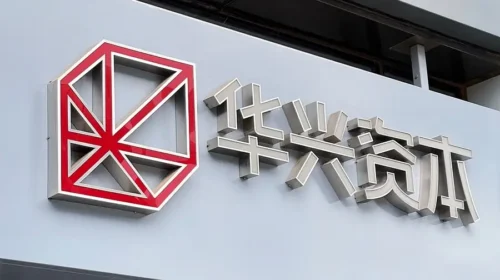Zepp’s stock surge: A China renaissance on Wall Street?

The wearable fitness device maker’s stock has more than doubled in the last two weeks, as it looks set to return to revenue growth after three years of contraction
Key Takeaways:
- Zepp Health’s stock has more than doubled in the last two weeks, much of that in the last week, as it forecast 30% revenue growth in the second quarter, its first rise in three years
- The company has been transitioning from making products under a licensing agreement with Xiaomi to developing its own Amazfit brand
By Doug Young
Two weeks ago we brought you the story of So-Young (SY.US), a cosmetic surgery clinic operator whose shares are up fivefold this year, most of that in the last month. Now, wearable fitness device maker Zepp Health Corp. (ZEPP.US) may be embarking on a similar ride as its shares have more than doubled in the last two weeks, much of that in the last week.
While it’s possible both of these are simply GameStop-style meme stocks whose movements are the result of speculative buying without any financial foundation, it’s also possible that something different is happening here. Put simply, we would postulate that this pair could represent a nascent renaissance for some of the many U.S.-listed Chinese companies whose shares have languished on Wall Street for the last five years.
So-Young seemed to catch investor attention with its move into direct operation of cosmetic surgery centers, away from its older business model of playing intermediary between independent centers and consumers. Zepp seems to have a similarly upbeat story to tell, including its imminent return to revenue growth for the first time since 2021.
Its rebirth comes as Zepp ditches its former business model of selling Xiaomi-branded wearables under a licensing agreement with the smartphone giant. In place of that, the company is developing its own brand, Amazfit, which is hugely challenging but also seems to finally be bearing fruit with Zepp’s return to revenue growth.
More broadly speaking, these two stories of So-Young and Zepp could reflect a growing realization by investors that perhaps they have been too harsh on any and every U.S.-listed Chinese stock, and an acknowledgement that some companies might be worth a closer look. The chill in major new listings by Chinese companies in the U.S., which we’ve discussed previously, could also be a factor. With few major new listings from China on the radar, investors may be starting to look at existing ones in search of some diamonds in the rough.
Even after its recent rally, Zepp’s stock still only trades at a price-to-sales (P/S) ratio of 0.46, which is double where it was in March but still quite low. So-Young’s P/S ratio was at a similar 0.42 at the end of March but has soared to 2.13 after its massive rally. Still, by comparison, both of those are well behind the 6.4 for global wearables giant Garmin (GRMN.US), showing there still could be some room for considerable upside.
Zepp has traveled down a difficult road since its U.S. listing in 2018. Back then it was known as Huami and its fate was closely linked to Xiaomi, a leading smartphone brand that also sells a wide range of other electronics, mostly under licensing agreements with other companies like Zepp. At the time of its IPO, about two-thirds of Zepp’s sales came from Xiaomi products.
Ditching Xiaomi
But Zepp quickly discovered that its reliance on Xiaomi was limiting its ability to grow, and also generated far lower margins than companies with their own brands. It decided to change course, and made that switch official in 2021 when it changed its name from Huami to Zepp.
Its sales of Xiaomi products have dropped steadily since then, as its gross margin moved in the other direction, rising from about 25% in 2019 to 37.3% in the first quarter of 2024. Still, the latest figure is well below Garmin’s 58%, which, again, shows there’s still plenty of potential upside for Zepp if it can become a serious player in the global fitness tracker market.
That market is huge, worth about $61 billion last year, according to SNS Insider. What’s more, sales are expected to grow around 15% annually between 2025 and 2032 to reach $230 billion yearly by the end of that period.
Zepp and its Amazfit brand are still just minnows in that market, but are quickly making a name for themselves as leaders in budget products often costing less than $100. As we noted earlier, the company’s revenue has fallen sharply in recent years as it weaned itself from Xiaomi, shriveling from $614 million in 2022 to just $183 million last year.
But the steep declines have moderated in the last two quarters as the company separates itself from Xiaomi, which accounted for just 6% of its sales in the first quarter of this year. As that happened, it reported its first-quarter revenue fell by a relatively mild 3.6% to $38.5 million. But more importantly, it forecast revenue growth of around 30% in the second quarter, marking its first such year-on-year growth since 2021.
“We think the revenue growth trend will definitely go up for the remainder of the year,” said CFO Leon Cheng Deng on the company’s earnings call in May. “And you also noticed that our gross margin expansion journey has been growing, and we will continue that journey as well.”
The company attributed the return to growth to two new products, the Amazfit Active 2 that went on sale during the quarter, and the Bip 6, which launched at the end of March. Both products have gotten generally positive reviews in the budget wearables category, and Zepp pointed out that each initially faced supply constraints that were expected to be fully resolved by the end of June.
Zepp was still losing money in the first quarter, reporting a $19.7 million net loss compared with a $14.8 million loss a year earlier.
The company talked up its growing geographic diversification, both in terms of sales and manufacturing. It said it currently sells its products in markets like the U.S., Spain and Italy. But it only specified that the U.S. accounts for about 15% of sales, which suggests the majority is still in China. In terms of manufacturing, it currently produces in China and Vietnam, the latter as a hedge against the U.S.-China trade war. It said it is also exploring the possibility of doing some manufacturing in the “NAFTA region,” which probably refers to Mexico.
For now, at least, we’ll need to sit back and watch if Zepp’s shares follow in the footsteps of So-Young and continue their rally, which could signal renewed confidence in the company. Its operations certainly seem to be improving, though investors will probably want to see at least another quarter or two of solid growth and a return to profitability before giving it a longer-term thumbs up.
To subscribe to Bamboo Works weekly free newsletter, click here





